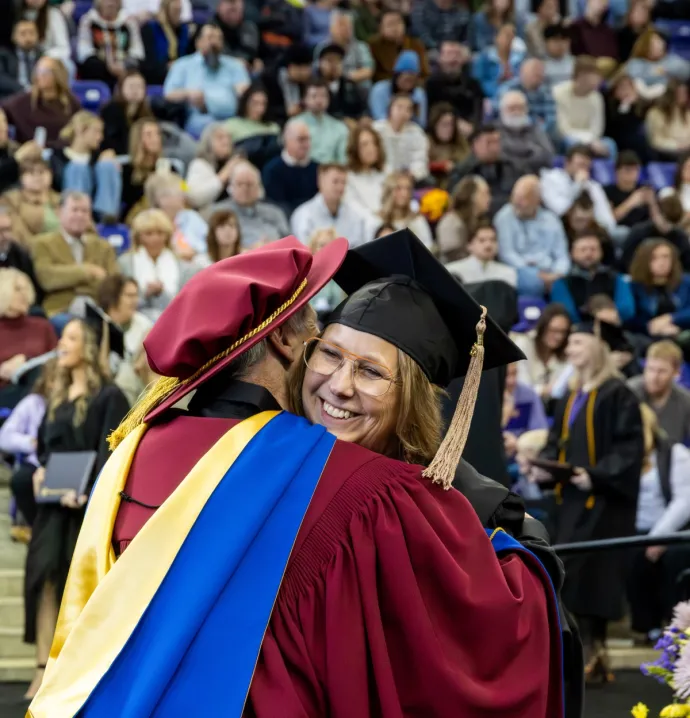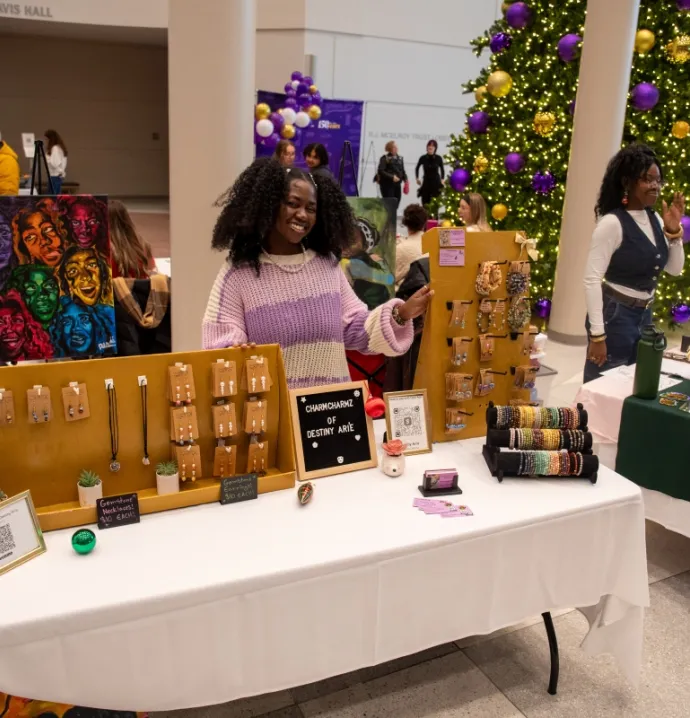IWRC painter training program reflects on 25 years
IWRC painter training program reflects on 25 years
The UNI Iowa Waste Reduction Center’s (IWRC) painter training program has evolved to serve needs.
In 1994, the IWRC launched a research project looking at two local Cedar Valley body and collision shops. They were similar in size, but one was producing twice as much waste as the other. The IWRC staff quickly found the excess waste was coming from inefficient paint application by the in-house staff.
That problem bred an idea: The IWRC, which was created in 1988 to consult organizations in environmental practices, thought they could combat unnecessary waste by training the painters to be more efficient.
The organization applied for and was granted funding from the U.S. Environmental Protection Agency. The goal was to develop painters through a three-day course, and the clients would be primarily manufacturers and automotive shops.
At the beginning, the program was titled STAR, or Spray Technique Analysis and Research. The IWRC built a training facility in Cedar Falls. Soon enough, instructors from community and vocational colleges all over the country could take the course and take lessons back with them. At its peak, the STAR program was in 38 schools, which implemented the training into their core curriculum for budding body shop workers.
But in the early 2000s, America was at war. EPA funding, which was the primary source of income for the program at the time, was hard to come by.
The IWRC saw there was a new need — in the military.
Tactical vehicles, the majority of which were painted green from previous conflicts, needed to be coated in tan to match the new Middle East environment. Considering the sheer numbers of the United States military vehicles, it was essential the painters be as efficient as possible to save time and money.
By 2003, the IWRC received funding from the Department of Defense to launch the Spray Technique Analysis and Research for Defense Program, shortened as STAR4D.
“It not only became an environmental benefit, but a financial one,” said Joe Bolick (Marketing ‘04), Interim Director of the IWRC. Bolick worked with the painter training program for many years. “If you’re doing things in a more efficient manner, you’re saving a lot of money with these very expensive coatings.”
At first, the STAR4D program was a modification of the original STAR course. Chris Lampe (Geography ‘99), the director of STAR4D, started as a trainer in 2003, right when the program launched. Trainings took place in various National Guard, Air Force and Army depots across the state.
But in 2004, the program branched into a certification process and opened satellite sites, which allowed it to expand outside of Iowa. Today, there are six satellite sites, including locations in Georgia, Alabama and Okinawa, where instructors, who are trained in Cedar Falls on an annual basis, teach the course on their own.
The program operates out of a 16,000-square-foot facility in Cedar Falls’ Industrial Park. The facility has the capability to replicate a manufacturing facility, featuring painting booths of various types.
Perhaps the biggest change to the painter training program over its 25-year history is the implementation of virtual technology. In 2006, the IWRC created a VirtualPaint system — a two-dimensional simulation to improve
spray application training. But in the last year, the software has been upgraded to three-dimensional technology. Students get a real-world feel of how to properly spray simple and complex parts.
VirtualPaint is a proprietary program and is actually patented by the UNI Research Foundation. During its 13 years of existence, the software has helped the program train more effectively while also reducing costs and waste.
“Virtual reality has always been very effective for us, but this is a way to speed up the process because you don’t have to use as many coatings, and you don’t have to go through as many real-world parts,” Lampe said. “You can use the same parts by pushing the reset button over and over again so painters can master their technique.”
The painter training program predominantly serves military suppliers and organizations, but it does help private businesses if they are interested in saving money and reducing waste.
The STAR4D program has also implemented a new way to practice what it preaches. The Marine Corps actually sends various assets, like HMMWVs, water trailers, generators and more, for IWRC staffers to paint in the facility. This helps the Marine Corps renew coatings and prevent costly corrosion, Lampe said.
“The program has always looked at where the needs were and the funding available to do it,” Bolick said. “We’re always looking for innovative ways. What can we do to improve operations?”
Save time, save money
Painting is certainly a costly task. Lampe said paint coatings can cost anywhere from $100 to $800 per gallon. It’s also expensive in terms of potential hazards. The paint that doesn’t actually stay on the part is soaked up by filters, which are costly and potentially dangerous to replace.
“The paint comes out of that gun, and it’s either going to hit the part or it’s going to the filters,” Lampe said. “If the majority of the paint that comes out of the gun goes onto the part, then you save the filters and don’t have to change them as often, which is often hazardous and costly to dispose of.”
Lampe said the program estimates about a 12-to-15% improvement in efficiency after taking the course. In the case of the military, where they could be using up to 25 gallons of paint per day, that means extreme savings and reduction in waste. The efficiency improvement also equates to longer-lasting assets, meaning less rework and even more cost savings. Painting is also unique in that it’s wasteful in three different forms: solid, liquid and gas.
“When it comes to sustainability, painting is one of the most wasteful processes in all of manufacturing,” Bolick said. “There’s a good chance some of the chemicals used in paint have the potential to be hazardous in all three of those forms. By increasing efficiency, you’re saving money but you’re also significantly reducing the environmental liabilities in the process.”
For the STAR4D program specifically, there’s a need to paint parts evenly to preserve performance of the part. For example, STAR4D assists a factory in Mississippi painting Chinook helicopters, the two-rotor military machine that costs about $35 million per helicopter to purchase.
How a painter applies the paint can drastically change the helicopter’s ability to maneuver and take off.
“The weight balance of the helicopters is important,” Lampe said. “The thickness of the coating can mean less weight on the aircraft, which is important when you consider taking off the ground. It’s critical.”
The IWRC has been helping clients for 25 years, and many of them have seen instant improvements. That’s because of the wealth of experience afforded through the program, which continues to serve needs in the public and private sectors.
“We’ve seen so many places and have so much experience doing this, and we’ve seen this in places all over the nation,” Bolick said. “It’s an extremely unique program, and we’re a one-of-a-kind facility in the United States when it comes to what we do.”




